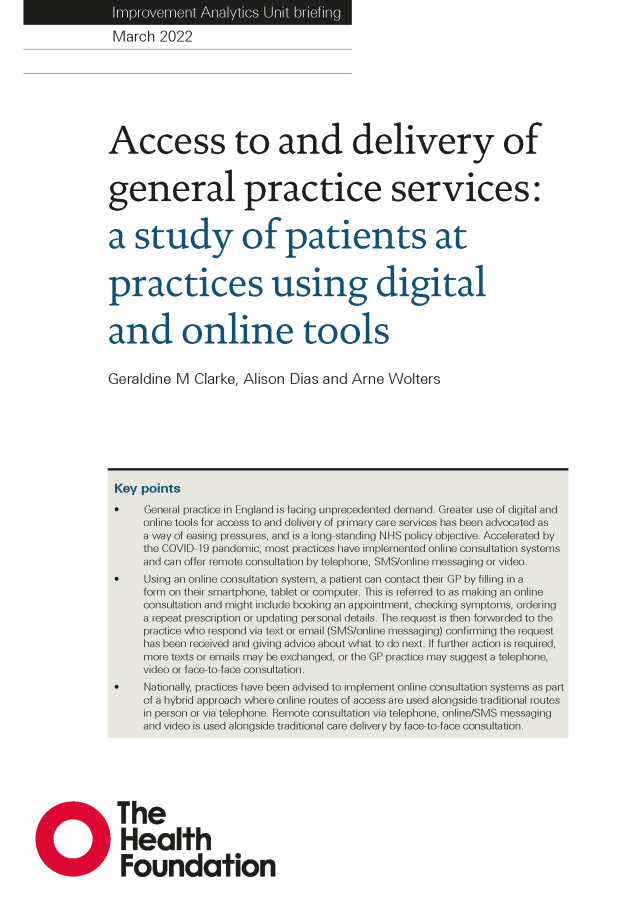Access to and delivery of general practice services A study of patients at practices using digital and online tools
March 2022

Key points
- This briefing examined data from 146 GP practices in England using the askmyGP online consultation system between 1 March 2019 and 30 September 2021.
- The analysis found that that 10% of patient care requests made to GP practices indicate a preference for a face-to-face consultation.
- Recently, the increasing use of online consultations systems such as askmyGP caused concern about the risk of digital tools creating inequalities by making it difficult for some patients to access care. However, the analysis shows that patients often choose remote over face-to-face consultations and that GP practices can mitigate the risk of digital exclusion via a blended approach.
A later version of this report using data that is more comprehensive and up to the end of April 2022 is now available here in preprint. We will update this link once the full version is available.
In this briefing, the Improvement Analytics Unit examined 7.5 million patient-initiated requests for primary care made using the askmyGP online consultation system between March 2019 and September 2021 at 146 general practices in England. These practices had a combined total list size of 1.35 million patients.
The analysis found only a minority of patient requests for care stated a preference for a face-to-face consultation – falling from 30% of requests before the pandemic to less than 4% at the start of the pandemic. And while requests for face-to-face consultations did increase after that, they only accounted for 10% of requests by the end of the study period in September 2021.
The analysis also found that, even before the pandemic, the largest proportion of patient requests at practices adopting a ‘digital-first’ approach were initiated online. This increased from 60% in June 2019 up to 70% just before the pandemic in March 2020, while overall demand remained low and fairly static over this period. During 2021, 72% of all patient requests were initiated online rather than by telephone or in person.
While more work is needed to examine the risk that online consultation systems will create inequalities in access, non-digital users did not appear to be disadvantaged by the move to greater adoption. Traditional routes of accessing and delivering care were offered alongside the digital system, and practices were able to tailor care according to a patient's characteristics, clinical needs and preferences. Factors such as patients often choosing remote over face-to-face consultations as well as the adoption of a blended approach by GP practices can help mitigate the risk of digital exclusion.
The evidence shows that online consultation systems can facilitate choice and flexibility in how primary care is accessed and delivered. With patient demand at an all-time high due to the care backlog that has built up during the pandemic, digital tools can help practices manage this pressure, enabling them to triage patients to the right person or service and prioritise face to face consultations for those that need them most.
Cite this publication
Further reading
Work with us
We look for talented and passionate individuals as everyone at the Health Foundation has an important role to play.
View current vacanciesThe Q community
Q is an initiative connecting people with improvement expertise across the UK.
Find out more


